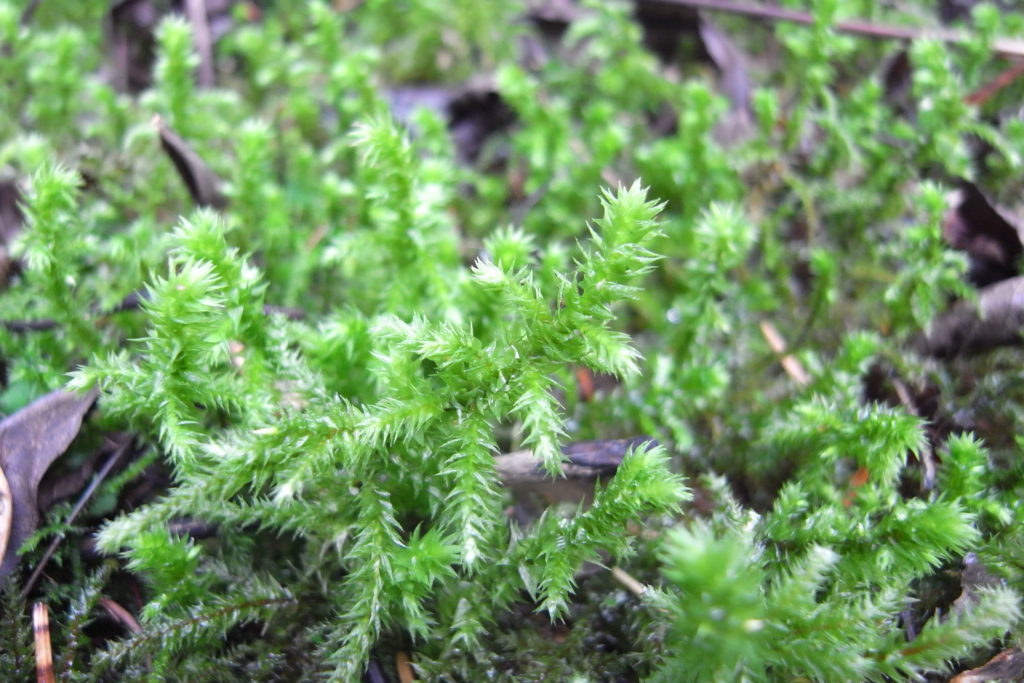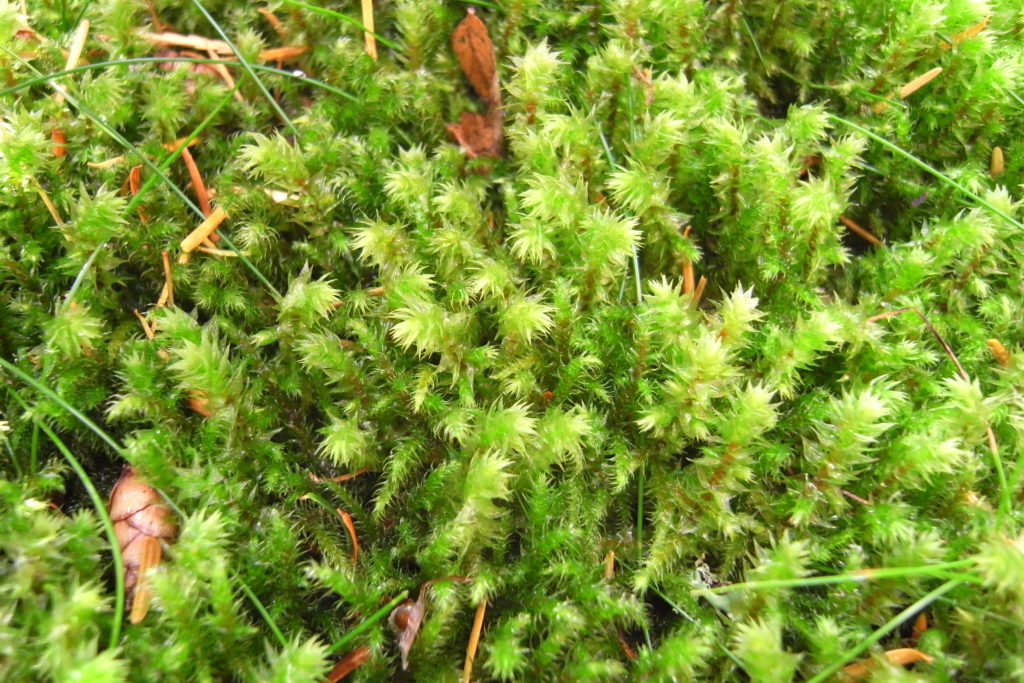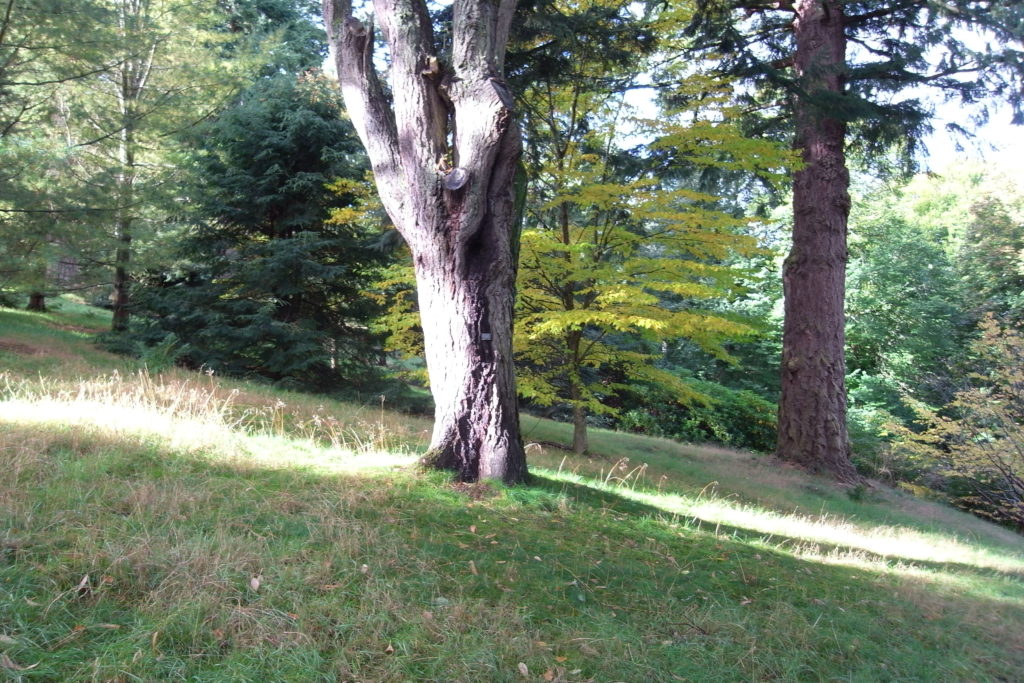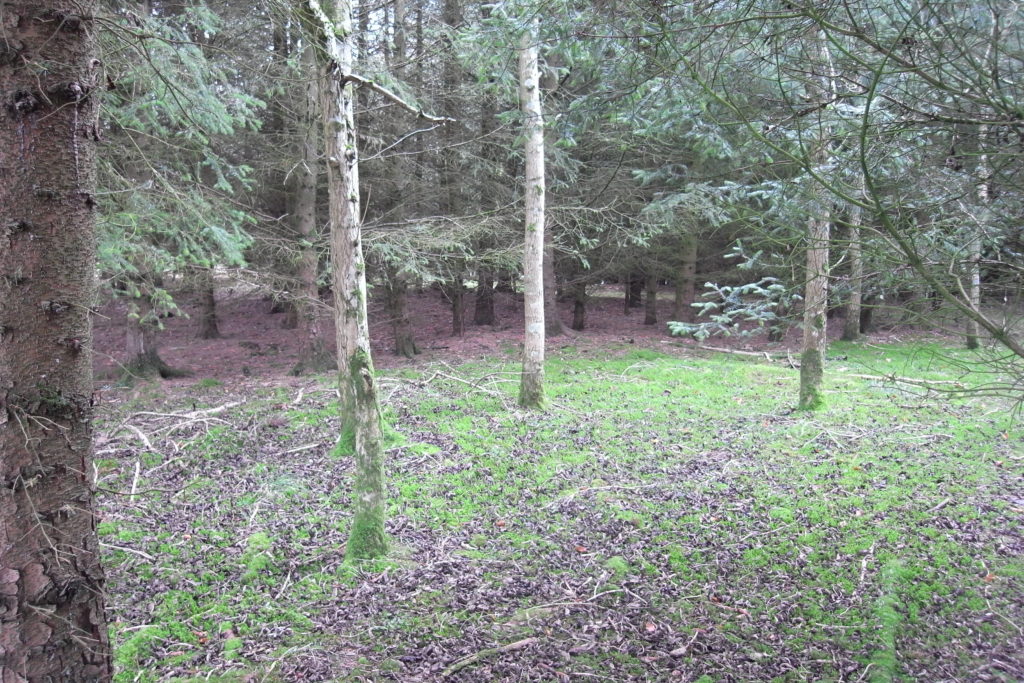Hylocomiadelphus triquetrus (Rhytidiadelphus triquetrus) has ‘pipe-cleaner moss’ among its many common names. It was collected for the Darwin Tree of Life project by Dr David Bell and Dr Liz Kungu, by the path to the chapel at Dawyk Botanic Garden, on the 1st October 2020. With pale leaves that stick out from the reddish stems in all directions, it is easy to see where the name ‘pipe-cleaner moss’ came from.
One of the larger and more abundant British mosses, it was an obvious choice as a test species for protocol development in the molecular lab, and so further collections were made from a second site by Dr David Bell and Dr David Long (Spottiswoode, 3rd December 2020).
The distribution of Hylocomiadelphus triquetrus declined during the 20th century; however recently the species has benefited from cleaner post-industrial air, and is reappearing in some of its former sites. Anecdotally, the occurrence of the species in churchyards, where it can be found in isolated patches on a few gravelly graves, may be down to a relatively novel form of dispersal – inclusion in floral wreaths.
(Another vernacular name for this species is the ‘electrified cat’s tail moss’, which is gloriously descriptive, although irrelevant to this story as cats are wisely not included in the twelve days of gifts, which after all include a total of 184 birds….)




